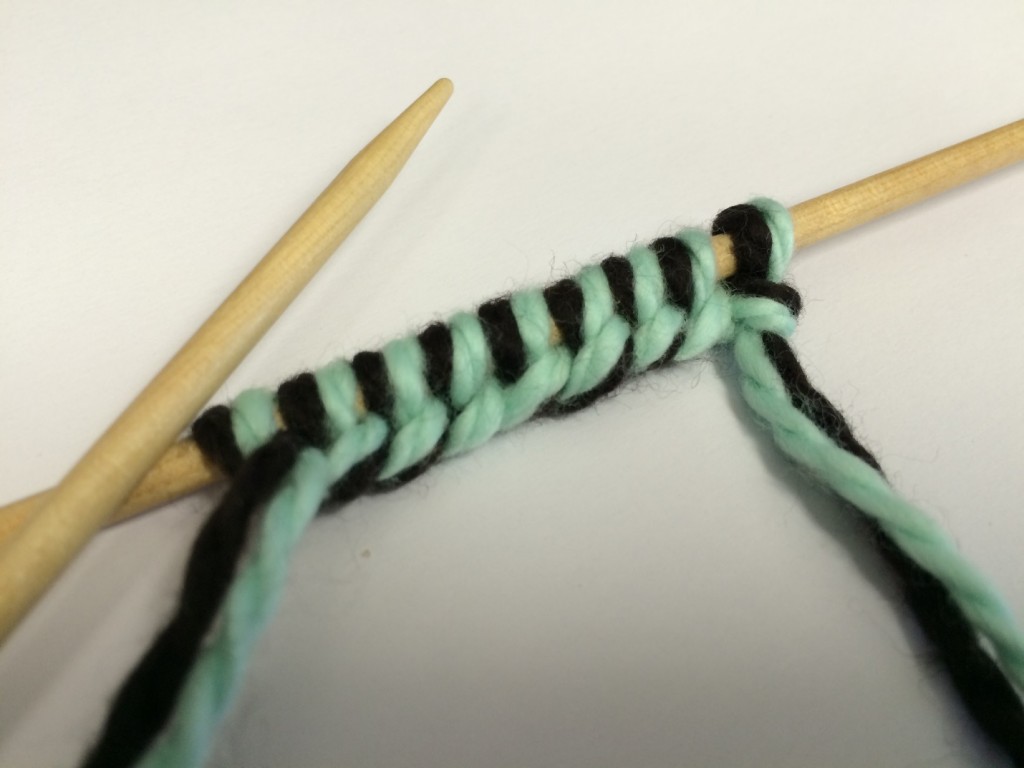
Double knitting is a fun technique to master, and once you get the hang of it, you will be creating a knit fabric that is double thick and has no wrong side. The entire piece will be stockinette stitch, too! Once you understand the basics of the process, you will be able to create stunning
Double knitting is a fun technique to master, and once you get the hang of it, you will be creating a knit fabric that is double thick and has no wrong side. The entire piece will be stockinette stitch, too! Once you understand the basics of the process, you will be able to create stunning mirror-image colorwork while knitting both layers at the same time. The thick fabric is perfect for items you don’t want a wrong side to, like an extra warm winter hat or even a pot holder.
While it may sound complicated at first, and especially while reading it, it really is quite easy. This tutorial will give you the basics to get you started on your double knitting journey.
Casting On
There are many different ways to cast on to prepare for double knitting. The easiest and most popular method is to cast on using both colors of yarn your pattern calls for at the same time. To do this, cast on with any method you like, but do so holding both colors of yarn while making sure that each loop you create has both colors. If possible, get the loops arranged in alternating color order. If you can’t manage that, you can always correct the order as you go, but it does speed the process along.
Cast on the exact number of stitches your pattern calls for. If your pattern calls for casting on 25 stitches, you’ll cast on 25 as you hold both yarns together. When you count, you’ll notice that there are 50 loops on the needle, 25 of each color.
Position of the Working Yarn
Once you have mastered your cast on, it’s important to note how to hold the yarn while you are working. Mastering this technique will make your double knitting process flow smoothly and with ease. When knitting a stitch (the front fabric) you’ll hold both yarns to the back of the work. When working the back fabric, you’ll be purling and will be bringing both yarns to the front between the needles and working only one color, leaving the other strand alone.
Working Across the Piece
To begin the first row, work the first pair of stitches as indicated in your pattern since every pattern is different, depending on the desired edge. The next stitch will always be worked knitwise and will the color of your front fabric.
The next stitch will be the second color. This stitch will be worked with the second color by working a purl stitch.
Continue working across the piece, knitting the facing stitches with the first color, purling the back stitches with the second color. Many patterns will tell you what do for the last pair of stitches, depending on the type of edge desired, so pay special attention to this detail.
Tips
As you become more comfortable with double knitting, make sure to check BOTH sides of your work after you complete each row. It is a very common mistake while learning this technique to accidently carry the yarn in front of the stitches on the opposite side of the fabric or to knit when you should purl (or vice versa).
Do you feel like you’re ready to try double knitting for yourself? Turn the page and give the Double Knit Tie a try! 


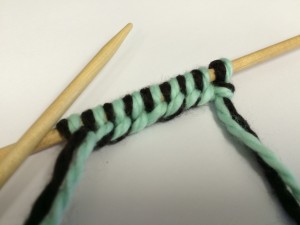
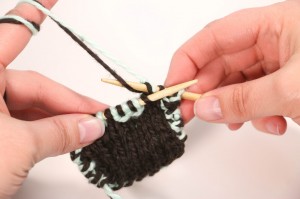
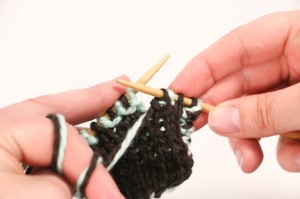
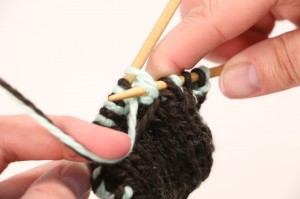
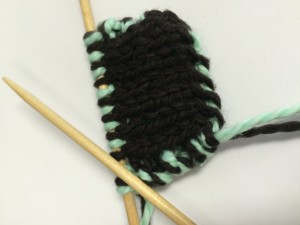
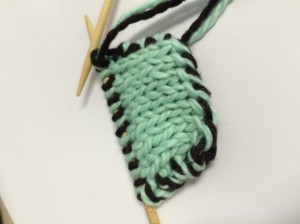
Is there a way to do double knitting on circular needles? If so, would you tell me how? I make a lot of hats on circular needles because I don’t like to sew selvages together.
Robbie, yes you can do double knitting in the round. Try looking it up on YouTube. I have a video that teaches you how to knit two socks at once using double knitting. Good luck! There is lots of information out there if you just Google it.
Actually I prefer to knit in the round. You don’t have to worry about edge stitches.
I’m wondering if this would work for a baby blanket. Perhaps using light-weights yarns?
I knit baby blankets using this technique all the time! It’s especially nice with light weight yarn, as you can get somewhat intricate with your designs.
This is a good way to create the hem for elastic on baby garments.
I have knitted for years and this is something I have never tried. Everyone I know may be getting stocking caps Christmas this year.